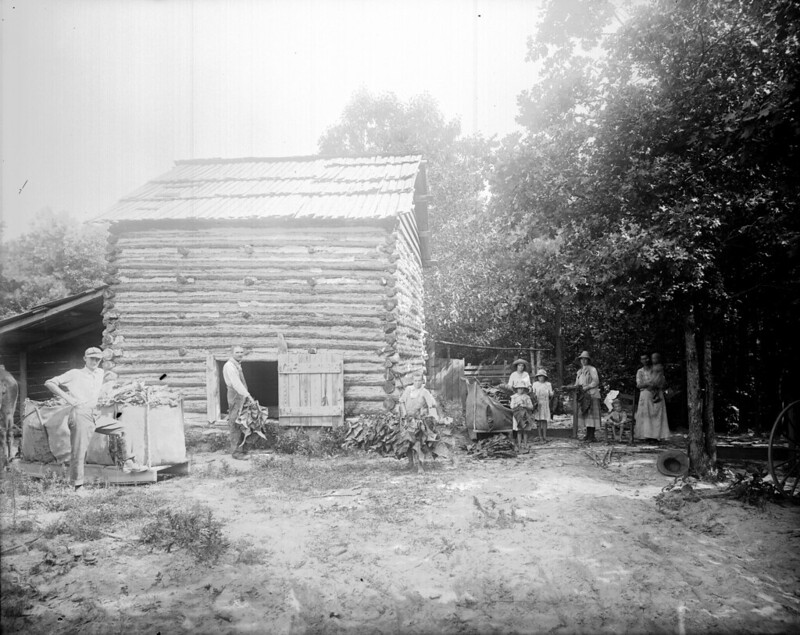Editor's Note – In the summer of 2012, Ansley Wegner, a historian with our Research Branch, wrote a series of blog posts highlighting various historical destinations around the state. This is the sixteenth post in that series. You can see all Wegner's posts on this page.
The Harvest and Hornworm event referenced at the end of this post is held annually, usually on the second Saturday in September.
I grew up in Wilson—long nicknamed the World’s Greatest Tobacco Market—but I never heard the extraordinary tale of how bright leaf tobacco was first cured.
An Accident of Historical Proportions
An accident in 1839 led to one of the most important breakthroughs in North Carolina agriculture history. A slave named Stephen on Abisha Slade’s Caswell County farm worked as a blacksmith and oversaw the curing of the tobacco crop. On one occasion, due to the warmth created by the fire, Stephen fell asleep in the curing barn.
A few hours later, he woke up to find the fire almost completely out. To try to keep the heat going, he rushed to his blacksmithing pit, retrieved charcoal and threw hot coals on the curing fire, creating a sudden, intense heat. His actions caused the tobacco to cure quickly, leaving it with a vivid yellow color.
Read More About the History of Tobacco in North Carolina
The Birth of Bright Leaf
 A tobacco curing barn in eastern North Carolina, circa 1900. Image from the State Archives
A tobacco curing barn in eastern North Carolina, circa 1900. Image from the State ArchivesThe new tobacco, which became known as bright leaf tobacco, soon became popular with smokers. Within a generation, the success of bright leaf made North Carolina a leader in the United States’ tobacco industry.
Tobacco has long been a critical factor in North Carolina’s economy and history. The tobacco barns that used to dot the landscape, however, are disappearing. Many farmers have turned to different crops. And those who still cultivate tobacco use modern technology for curing. The State Historic Preservation Office has a nifty website that examines surviving tobacco barns of various types and gives tips for preserving them and suggestions on adaptive reuse.
Learn More About Tobacco Barns
Historic Places That Recall a Once-Dominant Industry
Both the Tobacco Farm Life Museum in Kenly and Duke Homestead State Historic Site in Durham offer opportunities to explore and learn about traditional tobacco culture.
On September 8th, Duke Homestead is hosting a free Harvest and Hornworm Festival. Activities will include demonstrations of historic tobacco harvesting, stringing and curing, hornworm races, a MoonPie eating contest, musical entertainment, and craft vendors.

